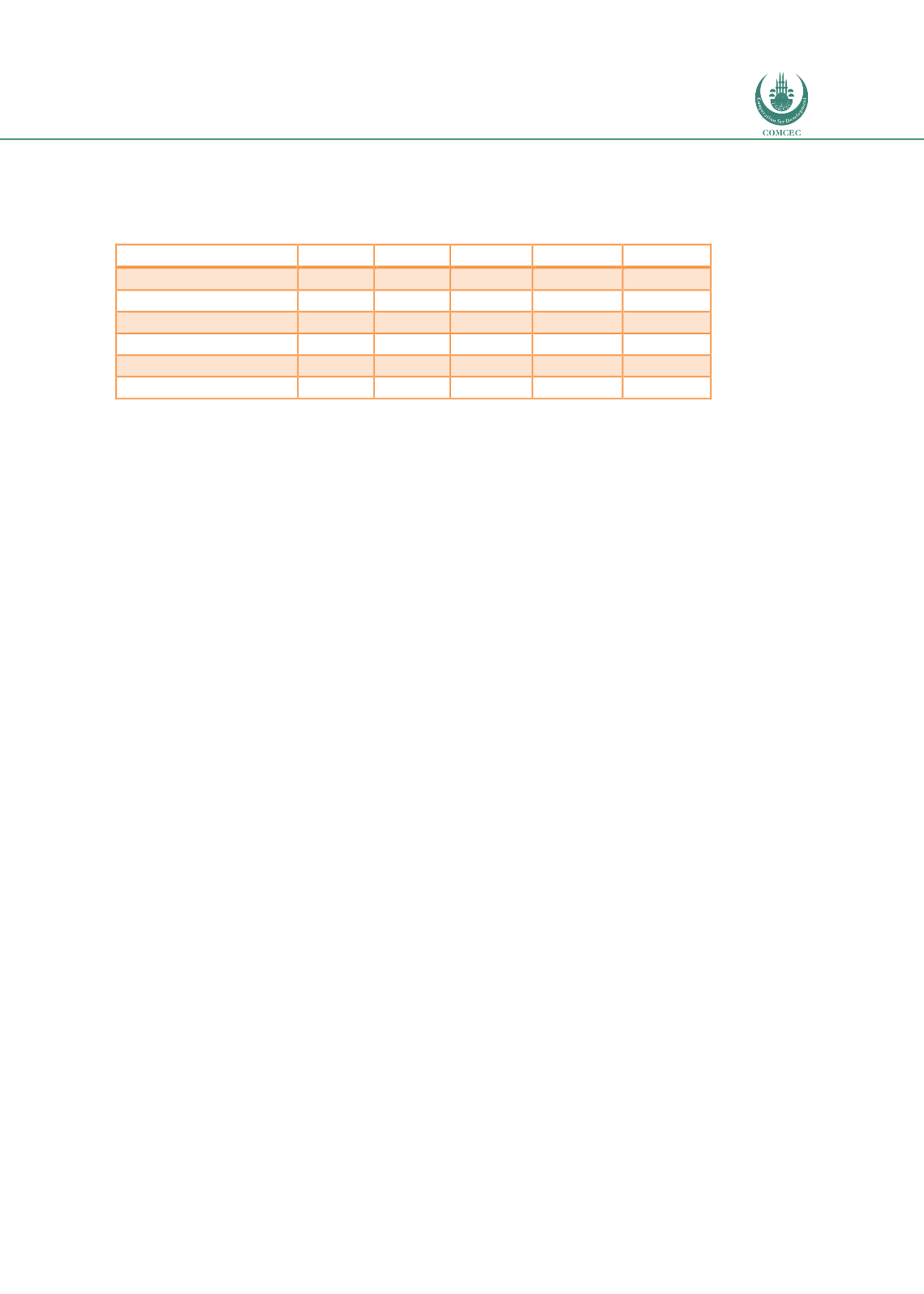

Improving Transnational Transport Corridors
In the OIC Member Countries: Concepts and Cases
89
As all border posts as well as pipeline transport are not part of the TRACECA, it is interesting
also to see the subset traveling along the corridor, which is shown i
n Table 19.Table 19: Transport statistics - TRACECA routes in Azerbaijan in 2016 (ktons)
Total
Road
Aviation
Rail
Maritime
Import
11,417
906
158
6,025
4,328
Export
9,724
507
91
5,124
4,002
Transit
10,125
437
67
4,727
4,894
Total border-crossing
31,266
Domestic
18,884
Grand total
50,150
Source: TRACECA
Ismayil (2017) states that 17-18 mtons of rail cargo travels along TRACECA every year.
Comparing to other rail freight markets, there are currently few containers along TRACECA
since these are generally moved by road. Feeder ships move about 300 000 twenty foot
equivalent units (TEUs)/year to the Georgian ports Batumi and Poti, and about 2/3 are moved
by truck and 1/3 go by rail (Ismayil, 2017), of which 35 kTEU were moved along the TRACECA
routes T20-T22 in Georgia in 2016, down from 44 kTEU in 2015.
Oil shipping has a long history on the Caspian Sea and in fact, the Nobel brothers launched the
world’s first oil tanker, Zoroaster, between Baku and Astrakhan in 1878 (Azerbaijan Caspian
Shipping Company, 2017). Nowadays vessels carry oil from Kazakhstan and Turkmenistan
over the Caspian Sea to Azerbaijan for transit by pipeline or rail. There are no dry ports (Roso
et al.
, 2009) for containers by the combination of sea and rail and little containerized goods
overall along the Caspian Sea part of TRACECA but mostly bulk and oil (Mamedov, 2017).
Nevertheless, the new port in Alat, 75 km south of Baku, is prepared for containers. Much of
Baku’s maritime traffic has now moved to Alat to avoid congestion in Baku and release the city
from air pollution. The new port is positioned to grant more direct access to Georgia along
TRACECA route T22.
Competing for rail cargo between China and Europe with more northern routes through
Russia, TRACECA can offer superior transport safety and reliability. It is critical, though, that
the time spent at border crossings can be reduced as too many border crossings significantly
hamper competitiveness compared with a northern route through Russia. In the best case,
border control (inspection and paper work) is done in two hours, but due to many border
crossings it is still slowing down trains travelling over many countries.
To be competitive, however, not only time consumption but also costs need to be kept low. For
rail transport, shipping and port handling, pricing follows nationally decided tariffs depending
on commodities, type of wagon and container rather than attempting to apply market pricing.
Ministries set maximum tariffs, but not minimum. Road, on the other hand, is highly
competitive but restricted by road permits. Ismayil (2017) finds rail operators to be rather
inflexible compared to road hauliers, so if more road permits were issued, rail would lose
traffic.
















